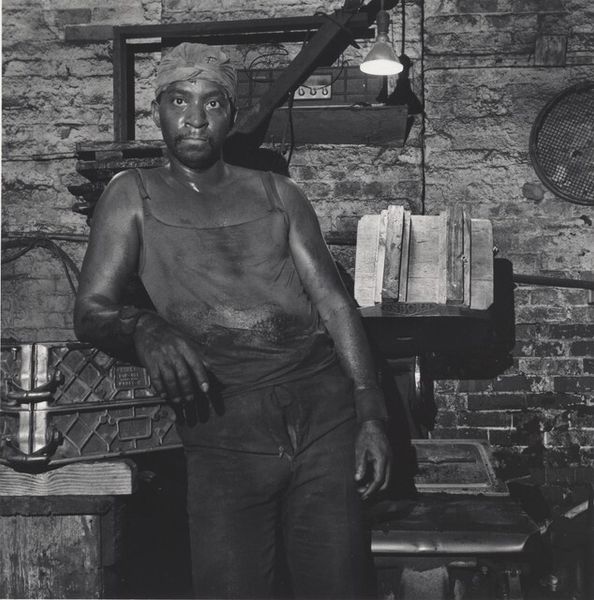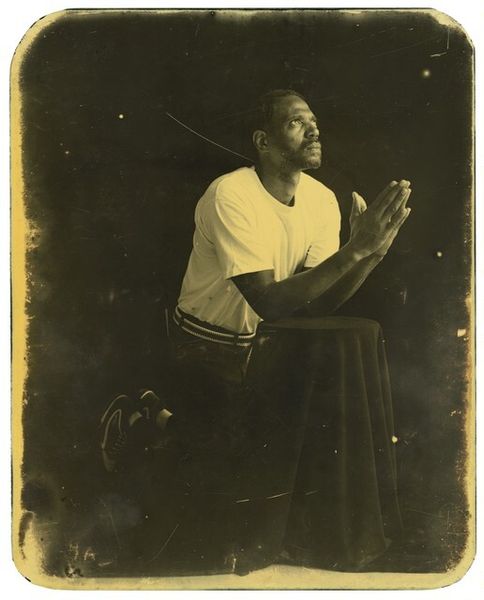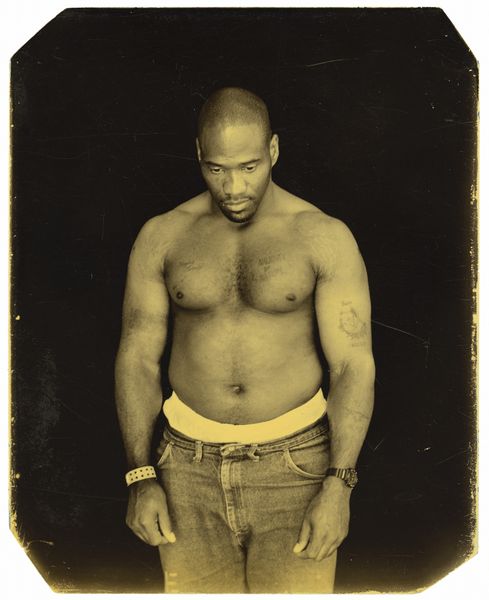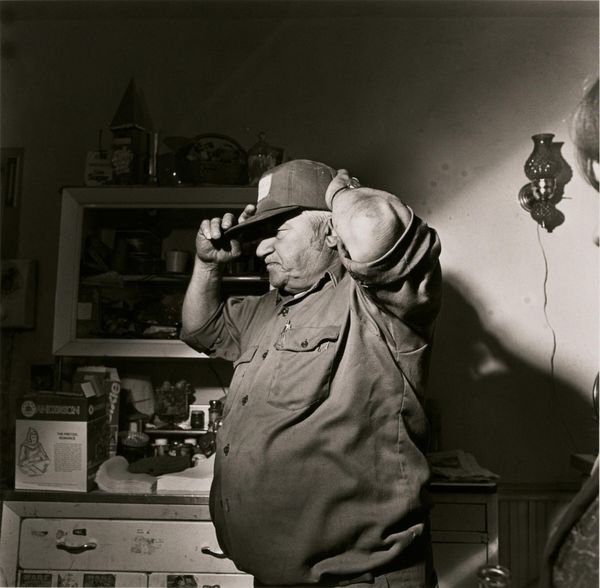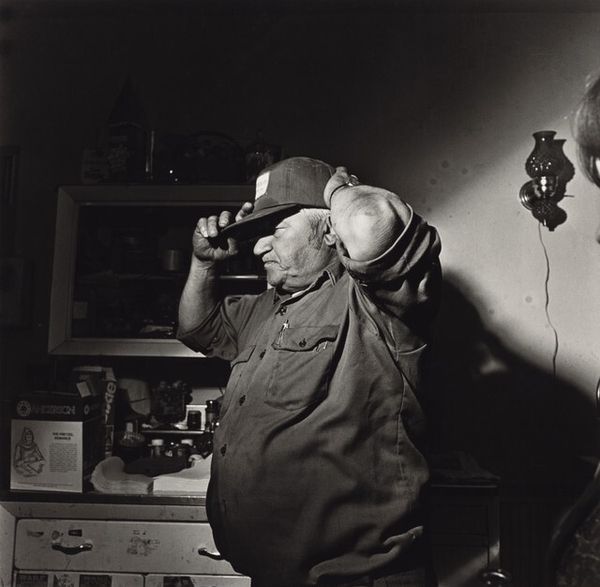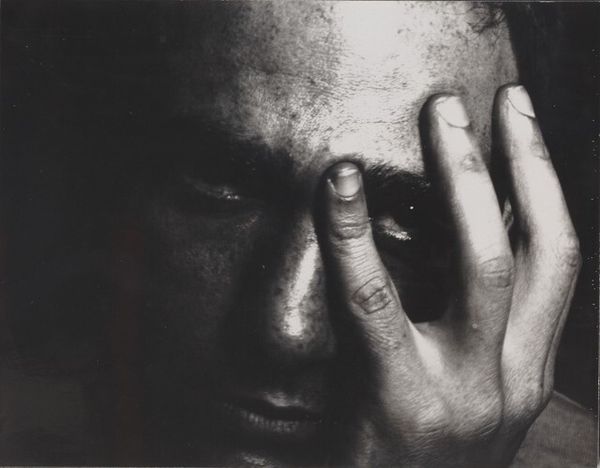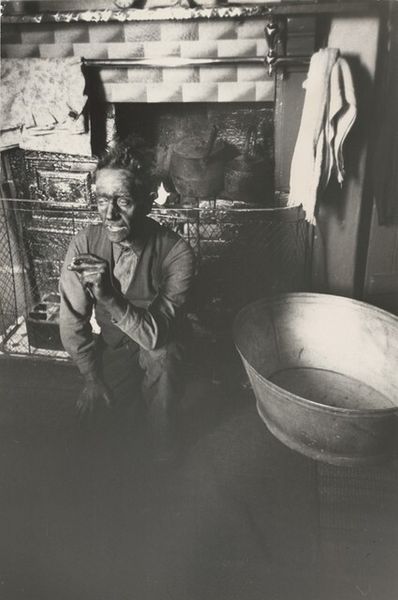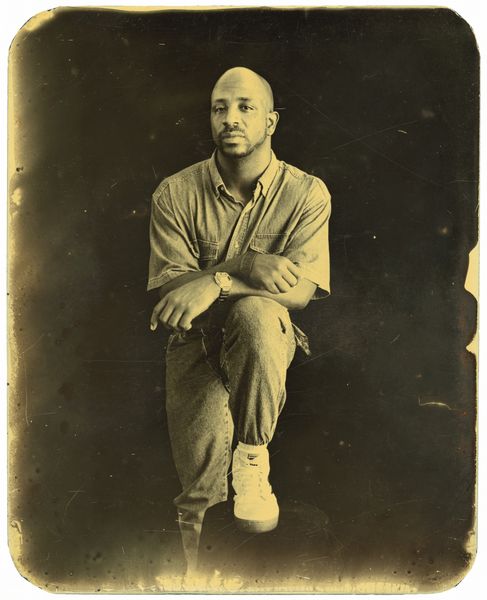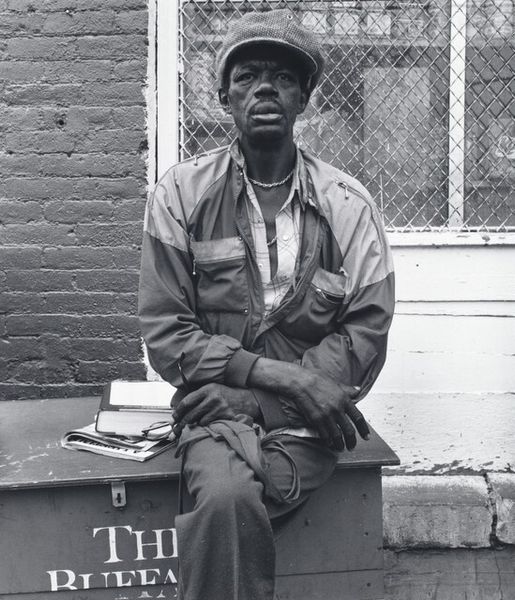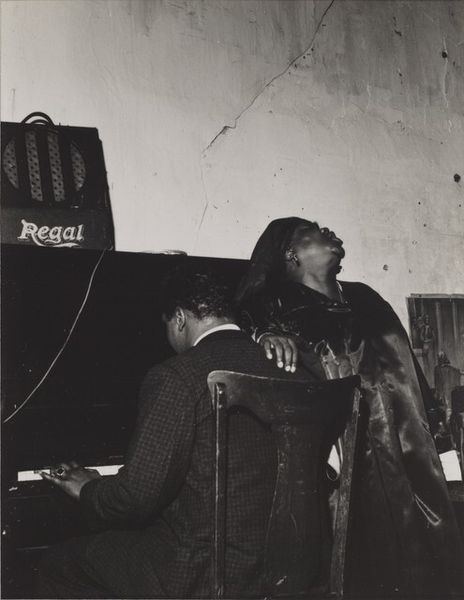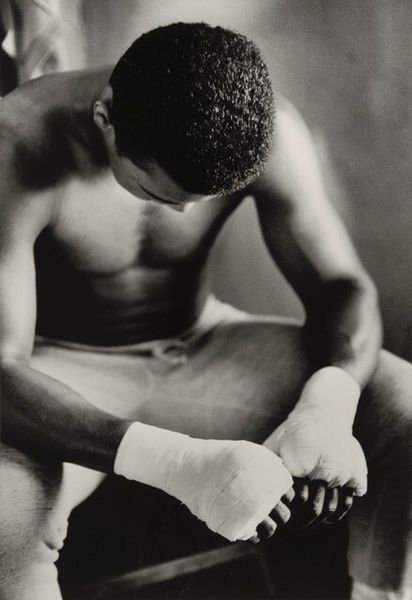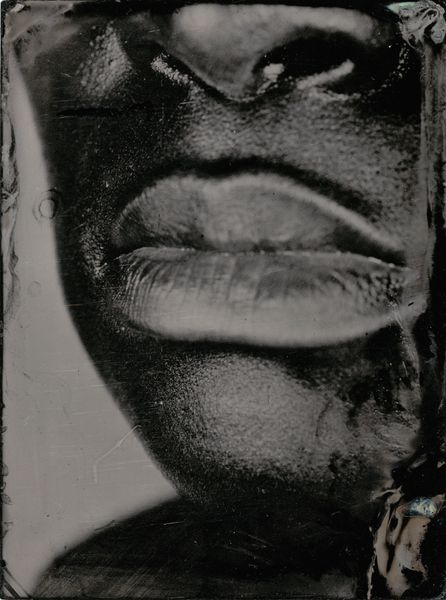
photography, gelatin-silver-print
#
portrait
#
contemporary
#
black and white photography
#
social-realism
#
photography
#
black and white
#
gelatin-silver-print
#
monochrome photography
#
monochrome
#
realism
#
monochrome
Dimensions: image: 17.5 x 16 cm (6 7/8 x 6 5/16 in.) sheet: 25.3 x 20.3 cm (9 15/16 x 8 in.)
Copyright: National Gallery of Art: CC0 1.0
Editor: This is "James Mathis, Amherst Foundry," a photograph from the "Working People" series by Milton Rogovin, taken in 1979. It's a gelatin-silver print. The man's intense gaze and the grimy surroundings create such a powerful image. What strikes you most about this piece? Curator: For me, it's the way Rogovin uses the camera to address issues of labor and representation. This isn't just a portrait; it's a social document. Consider the historical context: deindustrialization was hitting places like Buffalo hard in the late '70s. This image becomes a testament to the dignity of labor in the face of economic hardship. Do you think Rogovin is making a statement about class or race here? Editor: It feels unavoidable. The sweat, the grime, it all speaks to the physical demands of the work. And, being a Black man in this setting… it layers another level of interpretation. Do you think Rogovin is consciously engaging with social realism traditions? Curator: Absolutely. Rogovin's work clearly echoes the Social Realist movement. It forces us to confront uncomfortable realities, focusing on individuals often marginalized by mainstream narratives. The setting is just as important as the subject; it reinforces the narrative of struggle. The gaze of Mathis speaks of a steely resolve to resist. How might a contemporary viewer engage with this depiction of labor? Editor: In today’s context, I see it as a reminder to acknowledge the often unseen work that supports our society, also prompting critical discussions about fair labor and environmental justice within such industries. Curator: Precisely. This image serves as both a historical record and a call to action, urging us to examine the power dynamics embedded within our economic systems and the critical need for equality. It’s a complex portrait. Editor: I hadn't considered the larger historical narrative so explicitly before. Thank you!
Comments
No comments
Be the first to comment and join the conversation on the ultimate creative platform.
